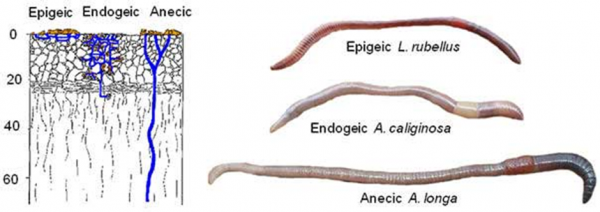Earthworms improve soil health
| Author(s): | Bala Tikkisetty |
| Published: | 07/12/2021 |
Earthworms improve the general condition of farming soils, reduce surface runoff of contaminants from pasture and prevent soil erosion.
Soils without enough of the right type of earthworms are usually poorly structured and tend to develop a turf mat or thatch of slowly decomposing peat-like material at the surface. Old dung and dead plant material lie about the surface. These factors can naturally inhibit pasture and crop production.
Introduced earthworms are essential to the development of fertile productive soil. They act as biological aerators and physical conditioners of the soil, improve soil porosity, structure, aggregate stability and water retention.
Earthworms also increase the population, activity and diversity of soil microbes, such as actinomycetes and mycorrhizal fungi. These microbes play a vital role in the supply of nutrients to pasture, digesting soil and fertiliser and unlocking nutrients such as phosphorus that are fixed by the soil.
Lower producing grasses are often more evident than ryegrass on these types of soils as well. Pasture growth is slow to start in spring and stops early in autumn. Plant nutrients tend to remain locked in the organic layer and there is poor absorption of applied fertiliser.
Plant roots in such soils are relatively shallow and pastures are therefore susceptible to drought. Water also runs off this type of pasture more easily rather than being absorbed into the soil, increasing water quality problems.
To help avoid these types of problems, soils should have a good diversity of relevant earthworm species.
The most common introduced earthworm in New Zealand is Aporrectodea calignosa, a topsoil dweller. This earthworm grows up to 90mm long and may vary in colour from grey to pink or cream.
Another very common introduced earthworm is Lumbricus rubellus, a surface dweller. Often found under cow pats, this earthworm will grow up to 150mm long. It is reddish-brown or reddish-purple, with a pale underside and flattened tail.
Aporrectodea longa live in burrows as deep as 2-3 metres below the surface.

Source: AgResearch
Undertaking an earthworm count will let farmers know if they have enough of the right type. Counts are preferably done in late winter to early spring when soil moisture and temperature conditions are ideal. Counts can be done by taking out a 20cm cube of soil with a spade. Around 30 earthworms would be ideal in a spade cube.
If soils are scoring way below that there are a range of ways to increase their populations:
- Ensure soil calcium levels are near 7, as calcium promotes earthworm reproduction.
- Maintain soil pH between 5.8 and 6.3.
- Limit use of agri-chemicals.
- Reduce ammonium-based fertilisers, as they make soils acidic.
Moist soils promote earthworm spread and activity and more will remain active in topsoil during summer under irrigation. Direct drilling and no tillage cultivation methods is another way to promote earthworm numbers. Use a mould board or disc plough rather than a rotary hoe. Cropping farms should include a phase of pasture in their cropping rotation to increase organic matter returns.
Earthworm ecological diversity is also critical to ensure soil functions are optimised. For example, the single species of Aporrectodea caliginosa alone was not able to improve water infiltration or pasture production. However, when this species was found in combination with Aporrectodea longa, there was positive influence on soil functions despite the abundance of A. longa itself not increasing. This study highlights the importance of including a measure of ecological diversity alongside a measure of abundance to assess soil biological health.
The earthworms play a great role in farm productivity and lessen the contaminant impact on water quality.
Remember, weight of earthworms below healthy productive pastures is approximately equivalent to the weight of animals grazing above ground – a thought provoking fact.
- Bala Tikkisetty is a sustainable agriculture advisor (technical) at Waikato Regional Council. For more information contact him on 0800 800 401 or bala.tikkisetty@waikatoregion.govt.nz.


To ask for help or report a problem, contact us
Tell us how we can improve the information on this page. (optional)